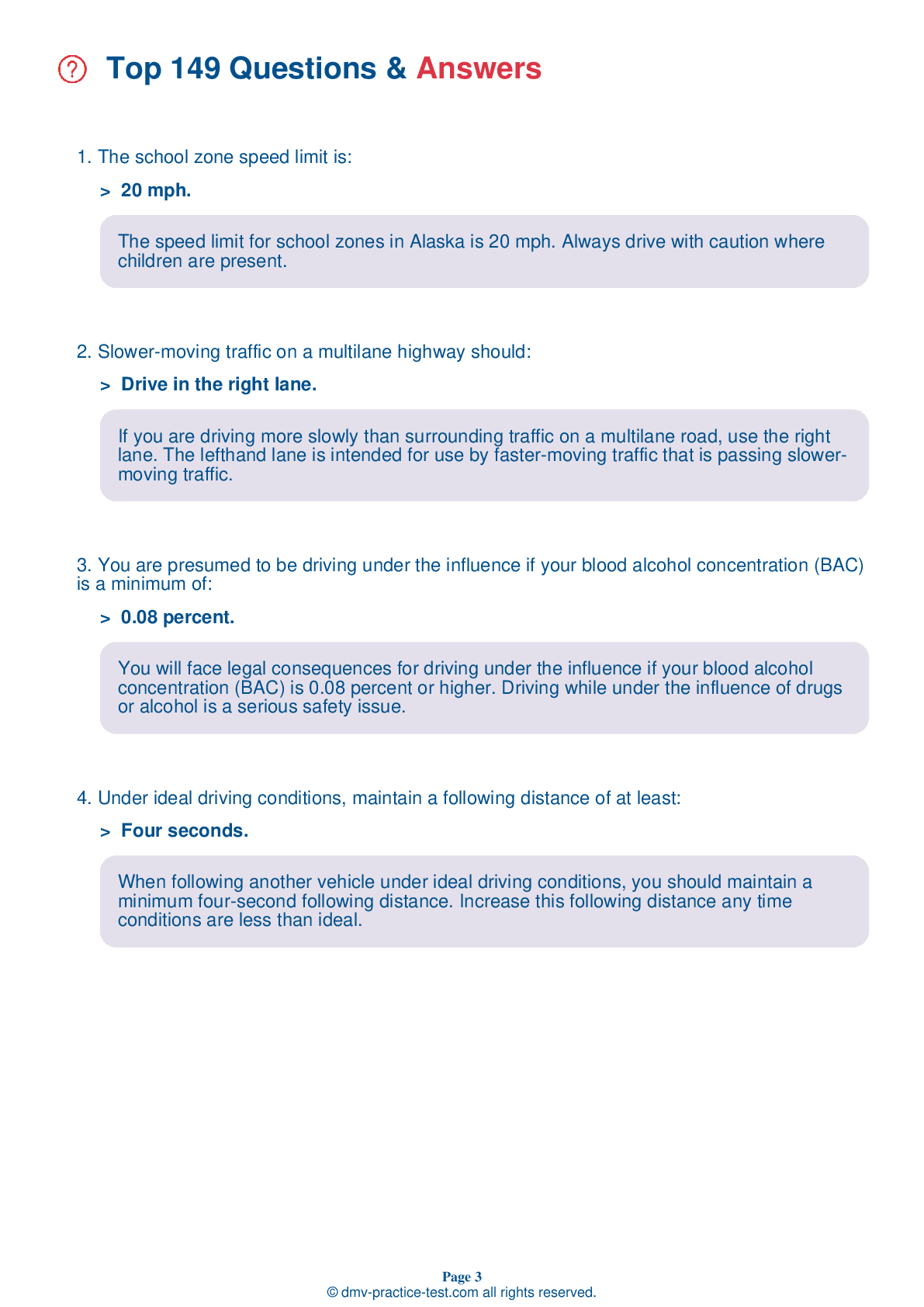FREE Alaska DMV Practice Test #19 Page 2 of 3
This Alaska DMV practise tests has just been updated for January 2025. It contains questions based on the most essential traffic signs and limitations from the Alaska Driver Handbook for 2025. Use actual questions that are very close (often identical!) to the DMV driving permit test and driver's licence exam to prepare for the DMV driving permit test and driver's licence exam.
To help you recall the topics, each practise test question includes a suggestion and explanation. The written component of the official DMV test will include questions about road rules, traffic signs, and driving statutes, as well as information from the Driver Handbook.
To get the required passing mark, you must correctly answer 16 out of 20 questions. Take our DMV practise exam to help you prepare for your Alaska instruction permit or driver's licence.
The DMV exam is available in multiple languages.
Using any form of testing aid will result in an automatic failure, and the DMV may take further action against your driver's licence, so don't do it.
7 . A slow-moving vehicle emblem is:
The slow-moving vehicle symbol is a reflective orange triangle. Expect vehicles using this emblem to be driving at speeds of 25 mph or slower.
8 . This road sign means:

This sign indicates that the road ahead curves to the right and then to the left. You should slow down to be able to negotiate these curves safely.
9 . This sign means:





